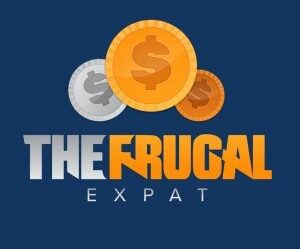Looking for an excellent ETF to help create portfolio diversification inside your investment portfolio can take time and effort. Vanguard ETFs have become well-known around the investment sphere for offering low costs, significant diversification, and tax efficiency.
Exchange-traded funds, ETFs, are a great investment vehicle to help grow your wealth. Unlike mutual funds, ETFs can be traded like stocks, making them more tax efficient. There is a broad range of different ETFs that you can choose from.
This article will explore the many different Vanguard ETFs and the best ones to help diversify your portfolio.
10 Best Vanguard ETFs To Grow Your Wealth
Looking at the many different ETFs that Vanguard has created can be overwhelming. There are plenty of them to choose from. Here are 10 of the best Vanguard ETFs.
VOO: The Vanguard S&P 500 ETF
VOO is like the king of Vanguard ETFs. It tracks the S&P 500, giving investors exposure to the market. VOO is compared to SPY and has a much cheaper expense ratio of 0.03% compared to SPY’s 0.09%. SPY is just more liquid and helps those that sell and buy options.
VOO is one of the best ETFs to add to your portfolio. It gives people broad exposure to large-cap companies and has had a growth rate of 12.21% over the last ten years.
The other great thing is that even Warren Buffett suggests that regular retail investors, like you and I, should invest most of our money into an ETF like VOO. So if you are getting your account started, a great ETF, to begin with, would be VOO.
Related: SCHD vs VOO: Which ETF Should You Choose?
VTI: Vanguard Total Market Index ETF
VTI and VOO hold similar top 500 companies, but VTI goes a little further and holds mid and small-cap companies in its portfolio. Unlike VOO, VTI comes with a much broader spectrum of companies. It consists of the whole total market that encompasses over 4000 different stocks on the stock market.
You may wish to add VTI to your portfolio as you want to be exposed to more than just large-cap stocks. It has an expense ratio of 0.03%, which is much cheaper than VTSAX, the index fund it is derived from.
Over the last ten years, it has averaged around 11.81%, slightly lower than VOO, but they are both great ETFs to have a stable fund supporting your portfolio.
Related: VTI vs VTSAX: How Are They Different?
VXUS: Vanguard Total International ETF
If you want more exposure to different markets, VXUS may be that ETF to add to your portfolio. Vanguard’s Total International ETF strives to capture the companies that are not held on the U.S. stock market. These markets can include Europe, Asian Stocks, Australian stocks, and others.
You will have significant exposure to international companies. VXUS is also an important international fund that can be added to your three-fund portfolio for greater diversification. It tracks the FTSE Global All Cap ex-U.S. index of over 7913 stocks. It comes with a low cost of 0.07% expense ratio.
It is supposed to be a high-risk, high reward, but over the last ten years, it has only averaged 4.23% in annual returns. You will get exposure to Taiwan Semiconductors, Louis Vuitton, Samsung, and Shell. So it is a great way to get exposure to foreign companies.
If you want more international exposure, VXUS can help you.
VT: Vanguard Total World ETF
Creating a portfolio is very simple because you only need one ETF to rule them all. If you are looking for an ETF that combines VTI and VXUS, look no further than VT. It is the Vanguard World ETF that combines all the great companies of the world into one ETF.
This Vanguard ETF holds over 9523 different stocks in it. It has an expense ratio of 0.07%, meaning it only costs $7 for every $10,000 invested. The average annual return has been 8.19% over the last ten years. VT has not done as well as a more concentrated portfolio like VOO, but it does give you massive diversification by having a piece of everything in your portfolio.
The top 10 assets would be assets you would find in VOO or VTI, like Apple, Microsoft, and Amazon. So you know that good strong companies continue to help this fund grow over the long term.
If you are looking for a simple one-fund solution to your portfolio, look no further than VT. All you need is VT, and you can roll.
VYM: Vanguard High Yield Dividend ETF
VYM is the high dividend ETF from Vanguard. It tracks the FTSE High Dividend Yield Index that seeks to hold stocks with high dividend yields. These companies will include Exxon, Johnson and Johnson, and AbbVie.
With a yield of 3.01%, it is one of the best dividend ETFs out there. VYM and SCHD are two of the best dividend ETFs to hold in your portfolio if you are looking for higher yield and good growth among the price and dividend.
The performance of VYM has lagged behind that of SCHD, but over the last ten years, it has averaged 10.60%, which is okay. It has about 441 stocks and a low expense ratio of 0.06%.
The low cost and good yield make VYM a great asset to your portfolio. It is a great Vanguard ETF that can add more dividends. As you retire, these dividends can provide a high income for your golden years.
VGT: Vanguard Information Technology ETF
VGT has been the best-performing ETF for Vanguard over the last couple of years. It is not the same as VUG but is often compared to QQQ. VGT primarily invests in technology companies like Apple, Microsoft, and Nvidia. It does not hold shares of Amazon or Tesla.
A 0.10% expense ratio is cheaper than QQQ’s 0.20% expense ratio. Over the last ten years, it has averaged 18.10% in annual return, with a dividend yield of 0.83%. It comprises over 373 stocks and significantly exposes people to technology information stocks.
Related: VGT vs QQQ: What is the Best Tech ETF?
VUG: Vanguard Growth ETF
Exposure to high-growth companies when you are young can help increase your portfolio. These companies can be any company, from Apple to Amazon or even Tesla. They are companies that still need to be considered value companies like Coke Cola but continue to invest their money into growth.
VUG invests in the CRSP U.S. Large Cap Growth Index. It has a portfolio of over 569 different stocks, with about 259 stocks that are characterized as growth companies. These companies include Apple, Microsoft, and Amazon. It has an expense ratio of 0.04%, less than other growth ETFs like QQQ.
In the last ten years, it has averaged an annualized return of 13.16%, which trumps the S&P 500 ETF VOO. If you are looking for a suitable growth ETF from Vanguard, look at VUG.
VB: Vanguard Small Cap ETF
To be more aggressive than the S&P 500, you can look at VB, Vanguard’s Small Cap ETF. It is more aggressive because some small-cap companies can explode but also implode.
If you look at the numbers, year-to-date growth for VB is 7.67%, while VOO is only 3.69%. Looking at it more long term VB is currently averaging around 10.09% over the last ten years, but it still offers a more aggressive outlook when buying small-cap stocks.
If you are looking for more upside, VB could be an ETF to add to your portfolio. With more risk involved, it could also grow less than VOO.
VNQ: Vanguard Real Estate ETF
If you want a piece of Real Estate, VNQ could be your portfolio’s ETF. It is composed of many different REITs (Real Estate Investment Trusts). These REITs invest in property, hotels, and land. They comprise companies like Public Storage, O Realty, and Simon Properties.
Many people get into REITs for income, and the REITs, pay 90% of their profits to the shareholders. The great thing is that you will get a quarterly dividend and a return on capital, which is a return on some of the invested money.
If you want more income, you can add VNQ to your portfolio. As a side note, keep VNQ in a Roth IRA because the dividends are taxed as ordinary income.
BND: Vanguard Total Bond Market ETF
For many, bonds are an excellent way to have safety in your portfolio. The great that about BND is the income aspect. If you are young, bonds may not be suitable for you as you seek higher growth instead of higher income. As you get closer to retirement, you may focus on revenue rather than the growth of your portfolio, which is where bonds can help you.
BND provides broad exposure to the U.S. bond market holding over 10,140 different bonds. The current yield is 4.36%, which will give you income as a source in case stocks drop in value.
Many people grab bonds to have a safety net for when a stock market crash may happen. As you age, you will look at income possibilities, and bonds would be a conservative choice.
The interest rate of BND may be high, but the overall performance is low. It is averaging 1.07% over the last ten years. So you are not buying this for growth.
Final Thoughts:
When looking for different ETFs to diversify your portfolio, many Vanguard ETFs can be added. The market has some great ETFs for beginners to start with as well. So pick and choose what may be right for you and start investing your money to grow. The earlier you start, the better. So start investing today with these great ETFs.

I’m Steve. I’m an English Teacher, traveler, and an avid outdoorsman. If you’d like to comment, ask a question, or simply say hi, leave me a message here, on Twitter (@thefrugalexpat1). Many of my posts have been written to help those in their journey to financial independence. I am on my journey, and as I learn more I hope to share more. And as always, thanks for reading The Frugal Expat.







